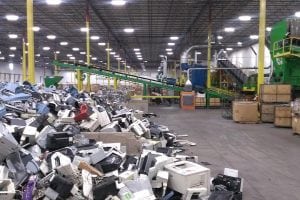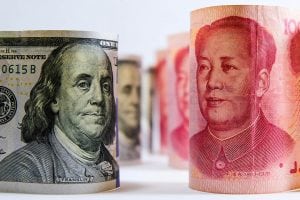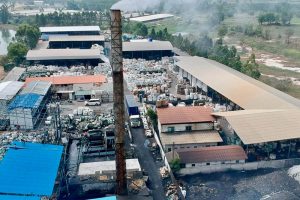 A nationwide processor will use tracking devices to monitor the downstream movement of its scrap electronics.
A nationwide processor will use tracking devices to monitor the downstream movement of its scrap electronics.

 A nationwide processor will use tracking devices to monitor the downstream movement of its scrap electronics.
A nationwide processor will use tracking devices to monitor the downstream movement of its scrap electronics.
 Import duties have taken effect on machinery, components and billions of dollars of additional products shipped to the U.S. from China.
Import duties have taken effect on machinery, components and billions of dollars of additional products shipped to the U.S. from China.
 The government of Thailand has banned all e-scrap from entering its ports, amid a major increase in shipments to the country.
The government of Thailand has banned all e-scrap from entering its ports, amid a major increase in shipments to the country.
Chris Brandt of BAN’s EarthEye program installing a tracker in a printer. Copyright BAN.
The Basel Action Network has launched a commercial tracking service to monitor e-scrap flows, and its first customer is an OEM that was lambasted by the watchdog group over exports two years ago.
An update to this story is available here.

The Basel Action Network has launched a commercial tracking service to monitor e-scrap flows, and its first customer is an OEM that was lambasted by the watchdog group over exports two years ago.
 Thai authorities are cracking down on e-scrap imports after government inspections showed frequent abuse of import licenses.
Thai authorities are cracking down on e-scrap imports after government inspections showed frequent abuse of import licenses.
 The debate over the merits and pitfalls of e-scrap exporting has been alive and well for decades now, but one thing has remained clear: Choosing to ship material halfway around the world adds a thick layer of complication to the basic goal of managing the domestic e-scrap stream.
The debate over the merits and pitfalls of e-scrap exporting has been alive and well for decades now, but one thing has remained clear: Choosing to ship material halfway around the world adds a thick layer of complication to the basic goal of managing the domestic e-scrap stream.

A Feb. 2, 2018 drone view of a site dubbed “dioxin factory,” where imported e-scrap is processed and circuit boards and wires are burned in a smelter.
A police raid at a massive e-scrap facility in Thailand prompted Seattle-based Basel Action Network to release results of its own investigations in the Southeast Asian country.

With the U.S. e-scrap industry continuing to rely on the export market, companies are not only contending with domestic laws and certification requirements – they’re navigating a wide range of complex and unique international laws as well.
A computer tower with a tracking device provided by the Green Tracking Service (device at lower right).
A U.S. company has begun providing an e-scrap tracking service so processors and OEMs can see where their downstream vendors are sending devices. One processor is already regularly using the service.
